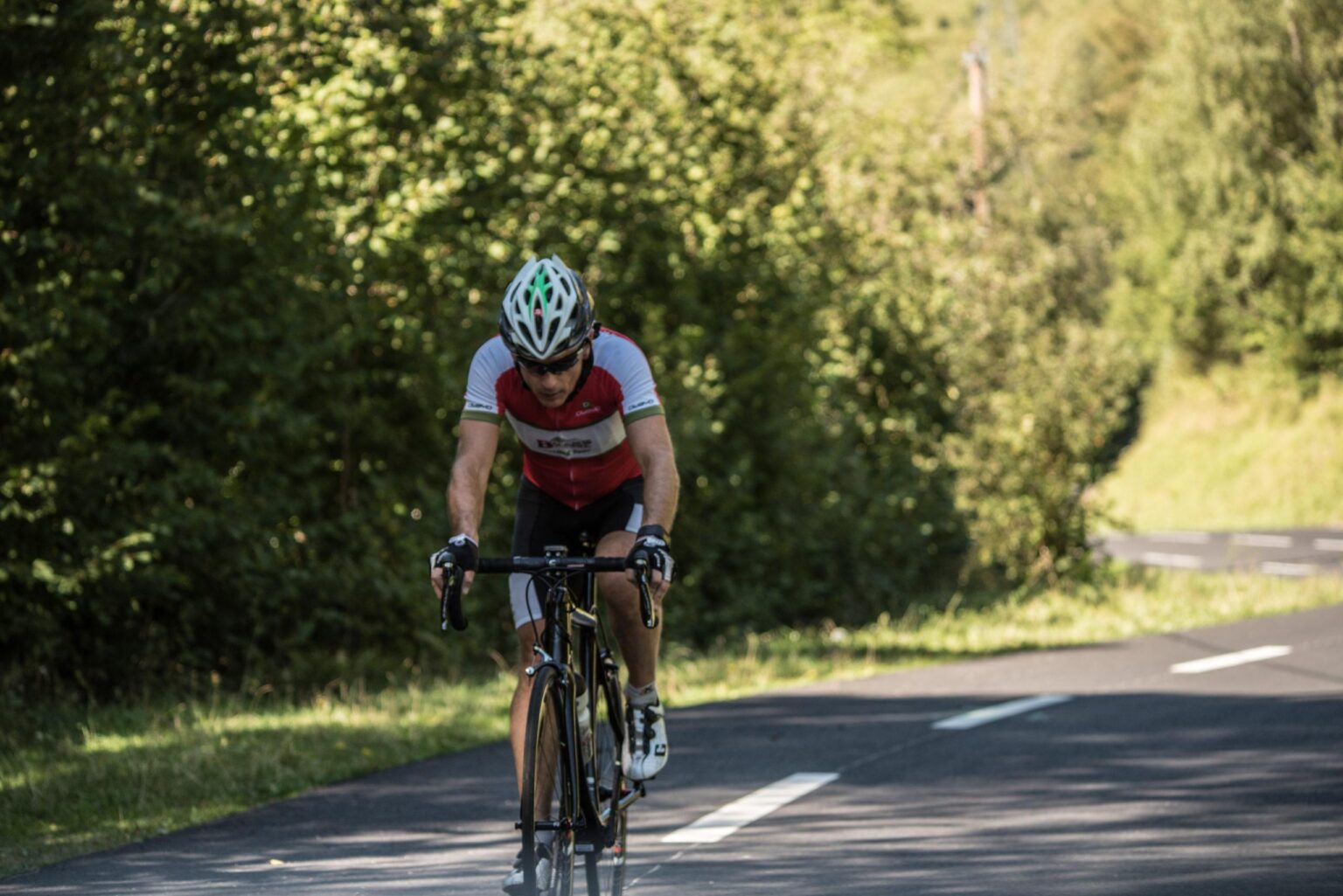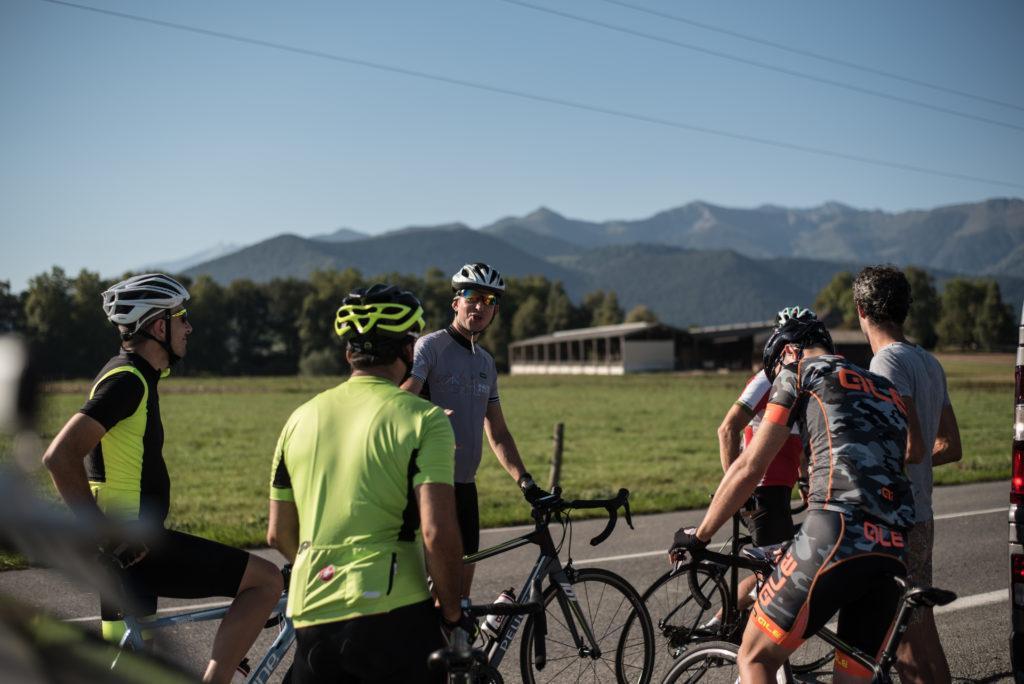
Published in:
By from Nigel Hale Hunter from BPM Coaching
The essential physiological asset required to do well in most cycling events is a competitive threshold power to weight ratio coupled with the ability to endure.
If you are capable of generating competitive watts at your threshold, you are likely to be a successful rider within your group or at your chosen event like the Raid Pyrenees or Raid Alps
Competitive Threshold
All competitive cyclists require both muscular and cardiovascular systems capable of delivering such threshold power. This coupled with the ability to endure, and an adequate supply of fuel and hydration will allow a rider to complete both long and short distances at a high sustainable competitive pace.
A good performance at threshold, both aerobic and anaerobic, is compulsory for winning a cycling race. Tactics, technical skills, VO2 max and sprinting prowess also matter, but having a competitive threshold power or more importantly a competitive threshold power to weight ratio makes it unlikely that you will get dropped before the finish line or find yourself struggling at a time trial, hill climb or race.
The good news is that anaerobic threshold, as well as aerobic threshold for endurance, are highly trainable and you training plan will show you how.
Train to a plan
Many riders train spontaneously with minimal structure, riding when they like and how they like.
However, to reach your true potential efficiently and safely, a structured plan is the best method.
Your plan will explain how to plan to train effectively based on proven sports science principles and experience.
Often riders coming into the sport believe that the only way to catch up is to chase and do more than an already successful rider, thinking that non-stop riding or chasing or riding continually at an exhausting intensity will enable them to quickly catch a rider that has perhaps developed his fitness and race craft over many years. Wherever you are in your cycling career always being chronically fatigued by engaging in an over-ambitious training schedule will not make you faster for long if at all.
For the competitive person, a non-structured approach is also more likely to lead to overreaching and then overtraining, this can manifest itself in an overly developed work ethic or worse an obsessive-compulsive behavior pattern. Both could end in an illness or injury that could delay your progression by months or even end it.
Often cyclists become so accustomed to overtraining that fatigue seems normal. Like any addict, the chronically over trained cyclist is continuing a behavior that is destructive believing it to be the solution and the idea of limiting training will seem counterproductive and even scary. Training to your plan will help you reach new levels of fitness and cycling performance by training smarter and training safely.

General advice
Think of all your rides and blocks of exercise in terms of training sessions or workouts. Remember training sessions and workouts only induce adaption when adequate recovery is taken afterward to allow the body to repair and adapt.
A warmup, work intervals, recovery intervals and a cool down period should be included as part of every session.
Two Anaerobic sessions should not be completed back-to-back without an adequate rest or alternatively an easier session between them. You will benefit more from sessions if you are fresh and adequately rested and again if you do not allow your body to recover it will not continue to make adaptions and therefore much of your work done will be less effective or even wasted.
During a period of training if you feel abnormally fatigued rest for a day, if you are unwell do not exercise until you are recovered, time off is always required when you are ill. Training when you are ill is counterproductive; it will worsen and or prolong what is already a frustrating situation. Try not to exercise hard immediately before or after flying, exercise temporarily reduces your immune system and that coupled with the stress of travel and the close proximity of the traveling population increases the risk of illness.
Riding with others can be fun, off road it is useful to improve your technical skills, and on road, it will help you improve group riding skills and tactics. Remember when riding with others keep within your training zones and keep the duration in line with your plan. Chasing others and overreaching by working in a higher than desired exercise zone for long periods or saving yourself in the draft of others is not beneficial. Remember different exercise zones make different adaptions at differing rates, so working harder is not always working smarter.
Most of your endurance work can be done in a one-day block during the week. This can be reduced when a long ride is not possible by the extension of higher intensity sessions with some continued exercise in zone 2 but not by increasing the number of high-intensity intervals you perform. You can also split this effort by doing perhaps two sessions remembering that anything under 2 hours in exercise zone 1-2 is not enough. If time is short increase the intensity to exercise zone 2-3 intervals, a tempo or sweet spot ride, alternatively use Session 2 on the static trainer.
Tapering for the main event
Being anxious about your performance in an approaching main goal competition or tour might tempt you to increase the volume and intensity of your training as it approaches. As a result, instead of being at your best on the day of the event or week of the tour, what we refer to as being “on form” you may well be fatigued and in danger of leaving your best performance on a training ride that you did sometime before the event or tour.
We now know that in the weeks running up to a main event, tour or competition an athlete should drastically reduce the volume of training whilst maintaining a high intensity, this is known as tapering.
We know that many athletes do not tapper sufficiently before an event, this might well be because it is counter-intuitive and there is a fear that a level of fitness may be lost resulting in a reduction in performance.
However, a successful taper can result in perhaps a 3% improvement in performance in a well-trained athlete. It is important to understand that on the day of a main event or competition we are looking for best form and form is the product of a level of fitness combined with a reduced level of fatigue. Often before tapering your fitness is at its best but levels of fatigue are also high and so your form is low.
Often by reducing fatigue drastically, via drastically reducing volume of training but adding short high-intensity intervals to try to maintain fitness gained from your training, we may or may not lose a little fitness, but the improvement in form via the reduction of fatigue will definitely far out way any negatives and will produce better results in competition.
For a successful taper, an athlete should train as many times per week as they do normally perhaps 4, 5 or 6 times in the week, but for much shorter durations of no more than an hour. The total volume of training should be reduced by perhaps 75% when adding in warm-ups and cooldowns with almost no training for the 2 days leading up to the event, perhaps just a recovery ride.
To recap we have stated, although the volume is reduced it is also important that this training should be of a high intensity. In short reduce the volume but keep the intensity high and in short intervals.
It is understood that to be fully effective a tapper should last between 7 and 14 days.
Author: Nigel Hale-Hunter
© Copyright 2024. All Rights Reserved – Bike Basque